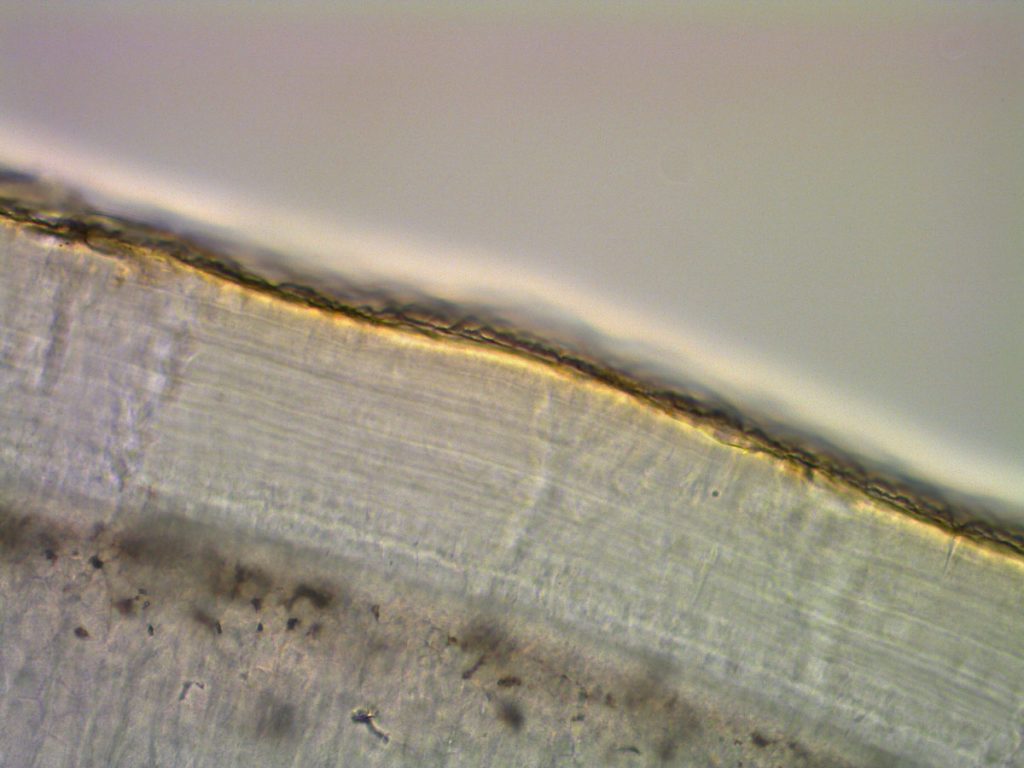Dental Histology
Human teeth analysed by dental histology can provide valuable tools for addressing the questions of age, health, diet, metabolism and lifestyles of past people. Our research is focused on the application and development of Tooth Cementum Annulation method (TCA) in the reconstruction of age profile and stressful metabolic events of prehistoric people. Also, we apply histological analysis on primary teeth and first permanent molars in the investigation of the Neonatal Line (NNL) which is the most precise method of age determination in infants and young children.
Tooth Cementum Annulation is a method of investigation of human teeth and making use of the annual appositional growth of the tooth cementum for a precise age-at-death determination. We use TCA method in the reconstruction of age profile of prehistoric people which provide most accurate age distribution within any past society. Additionally, because stressful metabolic events leave a more pronounced line in tooth cementum, we use this method as a tool of quantifying ancient metabolic stresses. In work we combine data gained from our clinical studies providing us with more knowledge about changes in tooth cementum due to different stressful events, such as pregnancy.
Neonatal Line (NNL) is formed during birth and is fully visible couple of days after birth. The determination of the NNL is used in forensics as a proof of live birth when the circumstances of birthing are not clear and the statement of stillbirth is suspicious. In our work we use neonatal line to establish precise age-at-death of ancient newborns. Additionally, studies of the enamel of the earliest deciduous teeth can provide an insight into the prenatal development and the perinatal conditions of children of past human populations.
Projects:
ERC Birth – Birhts, mothers and babies: prehistoric fertility in the Balkans between 10000 – 5000 cal BC, GA 640557, ERC-2014-STG
